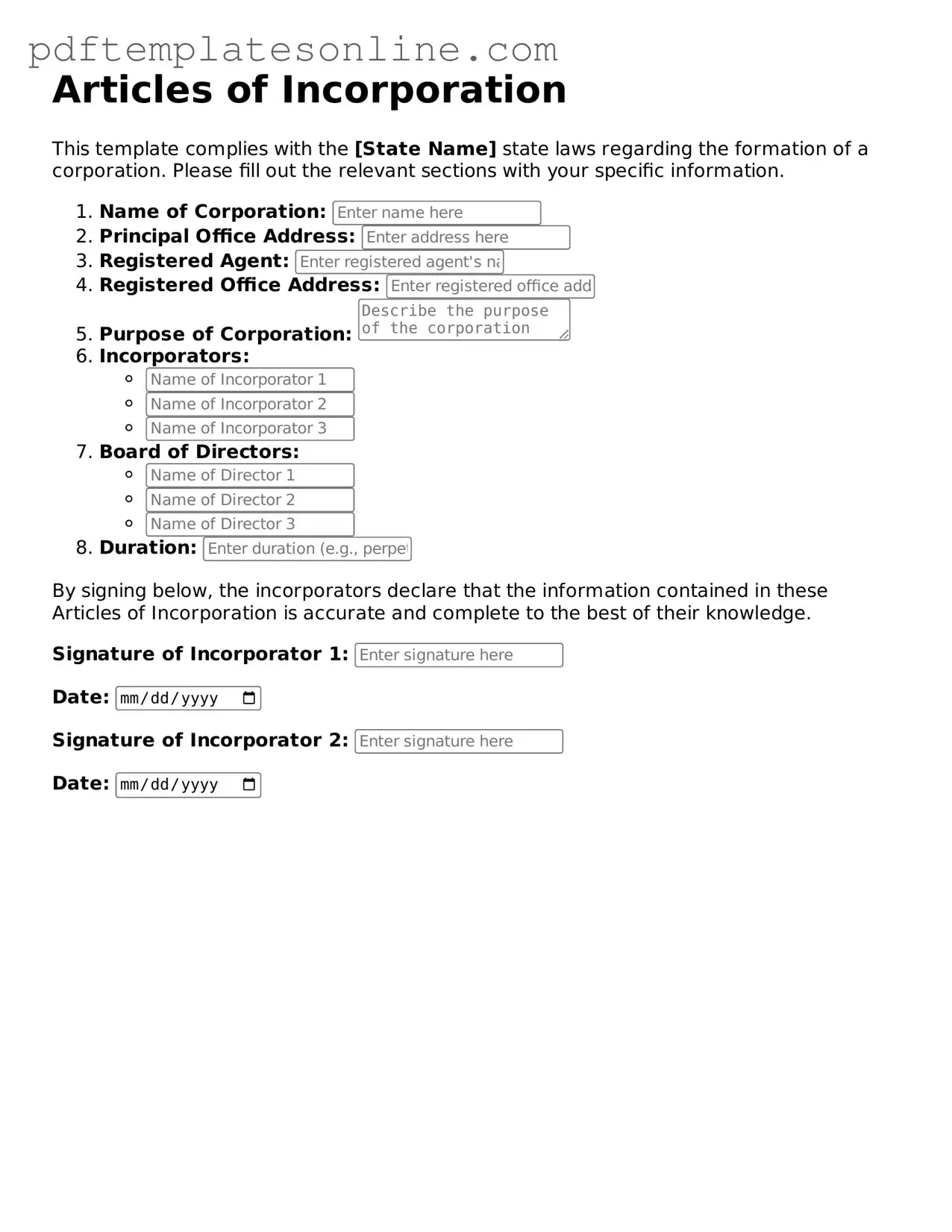Filling out the Articles of Incorporation is a critical step in establishing a business entity. However, many individuals make common mistakes that can lead to delays or complications. One frequent error is failing to provide accurate information about the business name. The name must be unique and comply with state regulations. If it closely resembles an existing company, it may be rejected.
Another mistake involves the selection of the business structure. Individuals sometimes choose the wrong type of corporation, such as an S-Corp instead of a C-Corp, without understanding the implications. This choice affects taxation and liability, so it is essential to consider the long-term goals of the business.
Additionally, many applicants neglect to include all necessary information about the directors and officers. Omitting details such as addresses or the number of shares can lead to the rejection of the application. Each state has specific requirements, and overlooking these can create significant hurdles.
Some people also fail to sign the Articles of Incorporation. A missing signature can render the document invalid. It is crucial to ensure that all required parties sign before submission. This oversight is often overlooked in the rush to complete the paperwork.
Inaccurate filing fees represent another common mistake. Each state requires a specific fee for processing the Articles of Incorporation. Individuals sometimes underestimate or miscalculate this fee, which can delay the incorporation process.
Furthermore, applicants often forget to check for compliance with state-specific requirements. Each state has its own regulations regarding the content of the Articles. Ignoring these can lead to unnecessary complications and delays.
Another frequent issue is the lack of clarity in the purpose statement. Some individuals write vague or overly broad descriptions of their business activities. A clear and specific purpose helps define the business and can prevent future legal issues.
Many people also overlook the importance of including a registered agent. A registered agent serves as the official point of contact for legal documents. Failing to designate one can lead to missed communications and legal challenges.
Lastly, some applicants submit their Articles of Incorporation without reviewing them thoroughly. Errors in spelling, grammar, or factual inaccuracies can undermine the credibility of the application. Taking the time to review the document can save significant time and effort in the long run.
